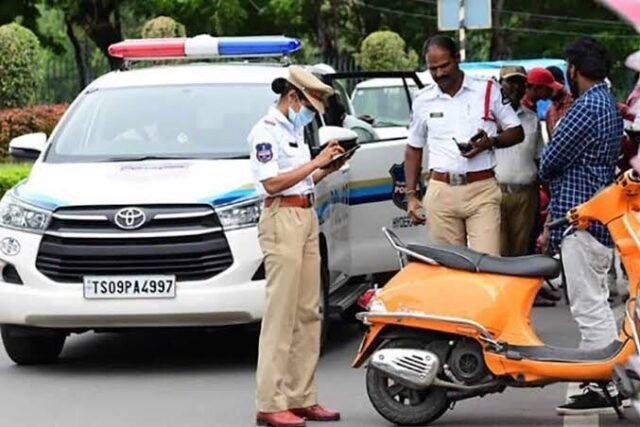Hyderabad: Hyderabad Traffic Police issued an average of 15,438 traffic challans per day in 2024 through various enforcement modes, including manual surveillance, CCTV monitoring and automated systems to enforce traffic rules and improve commuter safety.
Of these, nearly 2,000 challans per day were generated through Automatic Number Plate Recognition (ANPR) cameras, underscoring the growing use of smart technologies for traffic regulation.
This information was disclosed in response to a Right to Information (RTI) application filed by city-based resident Lokender Singh, who sought data on traffic enforcement under the Hyderabad Commissionerate jurisdiction.
284 ANPR cameras are now active in the city
According to official records, as many as 284 ANPR cameras have been installed across key traffic intersections in Hyderabad, surpassing the earlier proposed installation target of 260 units.
These cameras cover critical corridors in all five zones, Central, East, West, North and South, including major junctions like MJ Market, Jubilee Hills Check Post, Khairatabad, Basheer Bagh and Paradise Circle.
The West Zone has the highest number of ANPR cameras, covering high-density corridors like Banjara Hills, Jubilee Hills, Panjagutta and SR Nagar. In contrast, the South Zone has the lowest number of ANPR cameras, with fewer installations across areas like Chandrayangutta and Hussainialam.
These cameras automatically detect violations such as wrong-side driving, signal jumping, speeding and stop-line violations. This contactless enforcement model minimises human intervention, enhances transparency and ensures swift action.
82.73% challan repayment rate achieved in 2024
The Hyderabad Traffic Police also achieved an 82.73 per cent overall challan repayment rate last year. Out of 56.34 lakh challans issued, over 46.61 lakh were paid by violators.
Police stations like Saifabad (98.9%), Begumpet (97.33%) and Narayanaguda (100.08%) led in compliance, while areas like Amberpet (28.29%), Langer House (26.29%) and Santosh Nagar (31.62%) lagged behind, indicating a need for improved outreach or stricter follow-up.





